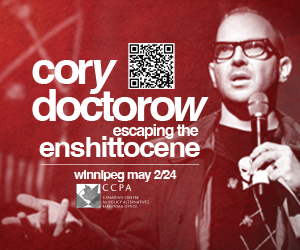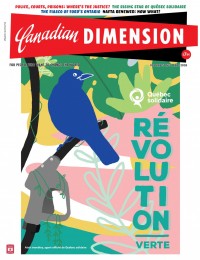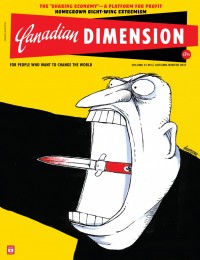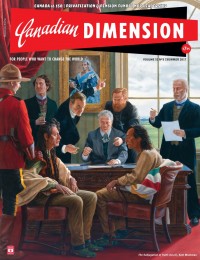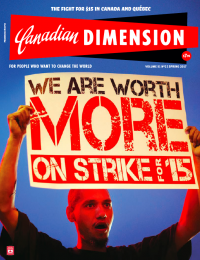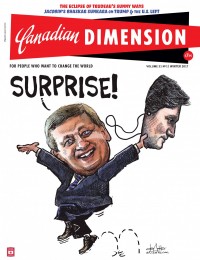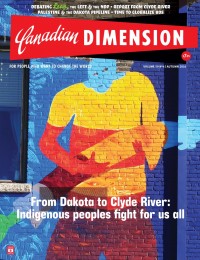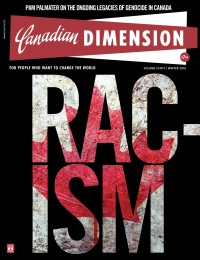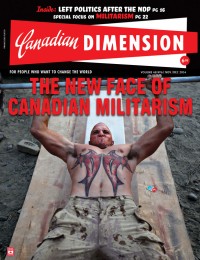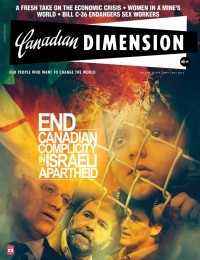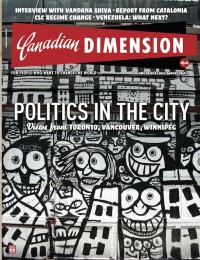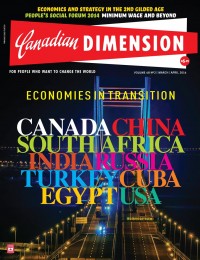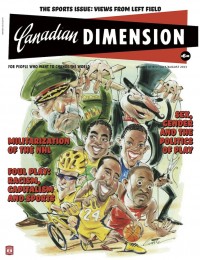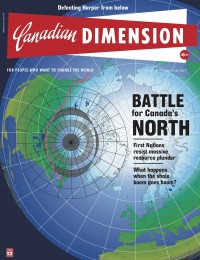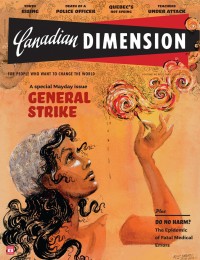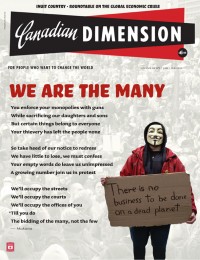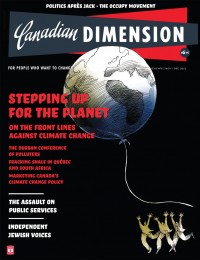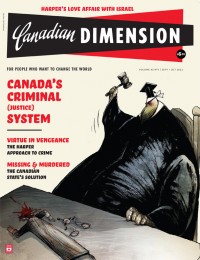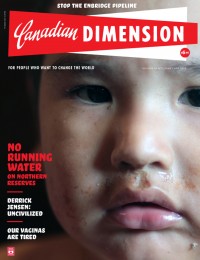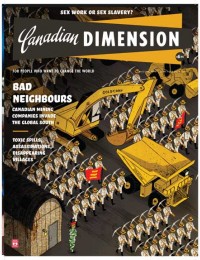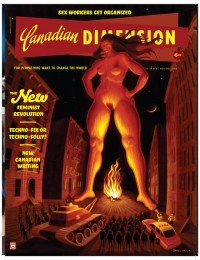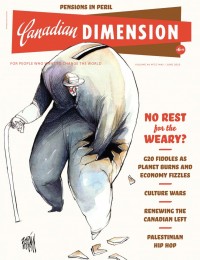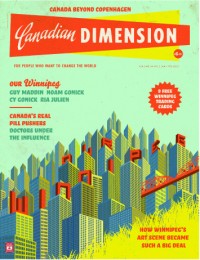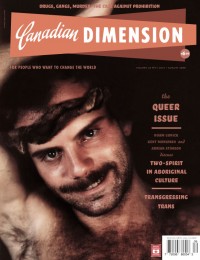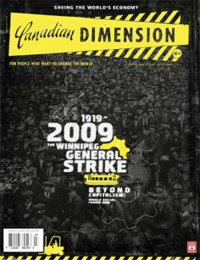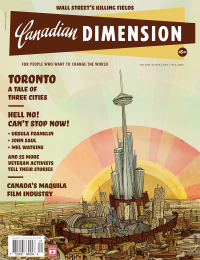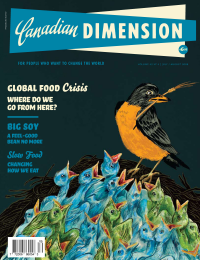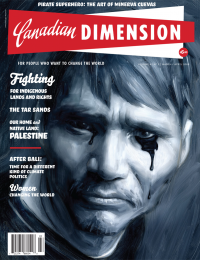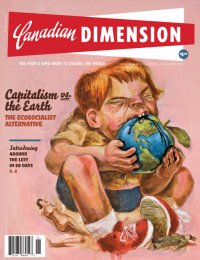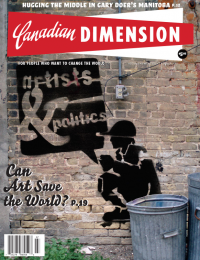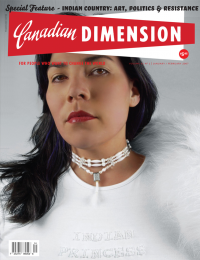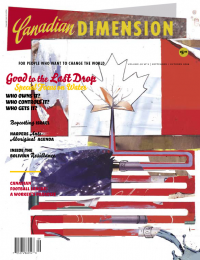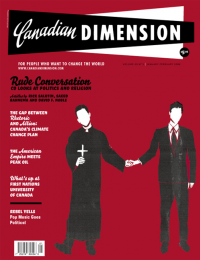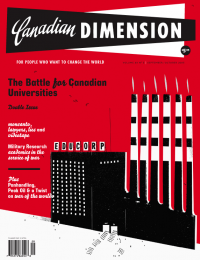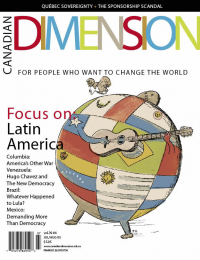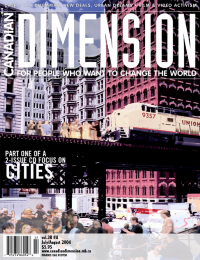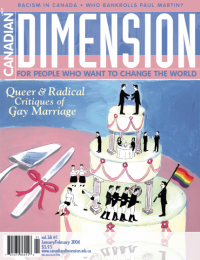The long march of the Canadian peace movement

Members of the Voice of Women, Women’s Liberation Movement, new Feminists and Young Socialists demonstrating at Queen’s Park in April, 1970. Photo courtesy of the Toronto Public Library.
The Canadian peace movement has just held a series of marches to mark the fifth anniversary of the war in Iraq and to call on the Canadian government to end our military involvement in Afghanistan. A majority of Canadians want the troops home, and over sixty per cent oppose extending the mission past 2009. Yet, almost every Liberal MP lined up with the Conservatives on March 13 to support Stephen Harper’s plan to extend Canada’s mission in Afghanistan to 2011.
The obvious question being asked in the media—and echoed by many within the progressive community—is: Why hasn’t the peace movement been able to translate this sympathetic public opinion into public policy?
It is helpful at times like these to reflect back on the history of the Canadian peace movement, to assess our strengths and weaknesses and the lessons learned by generations of activists. I invited several long-time peace activists to share their thoughts and experiences.
The sixties
The Sixties began with the Ban the Bomb movement and closed with the struggle against the Vietnam War. The early peace movement depended upon leadership from the Canadian churches, from women’s groups like the Voice of Women and the Women’s International League for Peace and Freedom, as well as from communists and socialists active in unions and the Canadian Peace Congress. These three groups provided the continuity that sustained the movement. The biggest obstacle was the Cold War; their greatest achievement, keeping Canada out of the nuclear arms race.
This era coincided with the rise of the New Left on campuses around the world. Students and faculty stood in solidarity with national liberation struggles and in opposition to American imperialism. Teach-ins were held across the country. I remember a film festival in my Scarborough high school, in 1968, where my teachers exposed us to films from Vietnam, as well as from the US Information Service, a wonderful lesson about propaganda and politics.
The seventies
If the Sixties was the Age of Aquarius, the Seventies was a time of disillusionment, drugs and disco. The war in Vietnam dragged on, and Trudeau’s promise of a Just Society was slow in coming. After the 1972 Christmas bombing of Hanoi, Hans Blumenfeld organized an ad published in the Globe and Mail entitled, “This War Must Stop,” signed by a very large number of prominent academics and others. Frank Cunningham notes that, “such ads are not uncommon now, but this was one of the first of its kind, and had an impact on a Parliamentary debate taking place at the time in which Parliament ended up passing a motion critical of the war.”
Doug Roche, former Canadian disarmament ambassador, recalls that, in comparison to the Sixties, “the 1970s were relatively quiet. The atmosphere of détente had generated a certain amount of complacency.” In 1976, however, as nuclear arms continued to proliferate, Project Ploughshare was founded to represent the Canadian churches on issues of disarmament and development; and Operation Dismantle was founded in 1977 to push for a world referendum on disarmament and to make a nuclear-weapons-free zone. Canadian Physicians for the Prevention of Nuclear War was formed in 1979, the first of many professional groups that bolstered the ranks of the peace movement in the eighties.
The eighties
It has been said that the election of Ronald Reagan in 1980 was the best thing that happened to the peace movement. His aggressive attacks on liberation movements in Central America and his rapid escalation of the nuclear arms race motivated millions into the streets.
During Reagan’s first visit to Ottawa, I helped my fellow Carleton students organize such a welcome that the secret service had to re-route his cavalcade, and Trudeau admonished us to be more hospitable when he got to Parliament Hill. My professors, Leo Panitch and Reg Whitaker, had to bail me out of jail after I was charged with Section 175 of the Criminal Code: causing a public disturbance by shouting. After helping to organize the “Refuse the Cruise” march, the Ottawa Disarmament Coalition and the Peace Petition Caravan Campaign—Canada’s first nation-wide peace effort—I was pleased to play a role in the formation of the Canadian Peace Alliance in 1985.
With Reagan’s help, we learned to organize a broad movement. Nonetheless, we failed at our major task, which was to stop the testing of cruise missiles over the Canadian north. As the possibility of nuclear war seemed to recede, this broad movement began to dwindle.
The nineties
The 1990s began with the collapse of the Soviet Union and the Gulf War. The peace movement rallied quite quickly when President George H.W. Bush prepared for an attack on Iraq following its invasion of Kuwait. Our mobilization stopped when the war ended quickly in March, 1991.
For much of the decade the movement was dormant, but there was a flowering of activity when NATO started bombing Yugoslavia in 1999. The progressive community was divided over the issue, with Yugoslav-Canadians (mainly Serbs) deeply angered at the NATO attack, while others supported “humanitarian intervention.” It was clear that the collapse of Soviet Bloc and end of the Cold War had not brought neither an “end to history” nor any “peace dividend.”
The twenty-first century
The new millennium brought new hope following the Battle of Seattle in 1999 and the rise of the global justice movement. The first World Social Forum helped debunk the myths of neoliberalism and show that “another world is possible”—but then came the attack on the World Trade Center on September 11, 2001, and the subsequent War on Terror. This undercut both the peace movement and the movement against corporate globalization.
We protested the bombing of Afghanistan in 2001, and our protests escalated as George W. Bush prepared to attack. Several friends from the Vietnam era thought it ironic that the country with the most weapons of mass destruction was attacking a country that proved to have none, so we organized an International Weapons Inspection Team to search for these weapons in the US. Our website, “Rooting Out Evil,” attracted 28,000 honorary weapons inspectors from around the world, who contributed $26,000 on-line to send our team of parliamentarians and senators from Italy, Denmark, the U.K. and Canada down to Washington. We got major attention on CNN and the BBC—but were virtually ignored by the Canadian media.
The mobilization of half a million Canadians in eighty cities and towns—particularly the 250,000 in Montreal—forced the government to alter course and averted our participation in the Iraq war. That was a major victory for the Canadian peace movement. The subsequent decision not to participate in the US’s missile-defense system was another major victory.
Why then can’t we bring our troops home?
“The popular sentiment in Canada is to get out of Afghanistan, but we have not found a way to give that sentiment an ongoing organized, effective expression of the sort that would compel our political leaders to withdraw,” says longtime Vancouver activist Mordecai Briemberg.
The major factor accounting for the Conservative and Liberal parties’ support for Canadian involvement in Afghanistan is their sense of fealty to (and economic dependence upon) the United States. Ever since the former American ambassador pressured Canada to increase defense spending, our own military-industrial complex is applying additional pressure on our government. The Department of National Defence has sharpened its capacity to do propaganda, with over 500 public-relations people selling us on the merits of the war.
With our corporate media echoing their message, and so much exposure to American media trumpeting the War on Terror, the Canadian public is divided.
Islamophobia is our Achilles Heel, according to Sid Lacombe, coordinator of the Canadian Peace Alliance. Economic inequality and insecurity means that people are busy just coping, working longer for less, and are often reluctant to risk what little security they have. Neoliberal ideology continues to erode our social consciousness and capacity for collective action, and, while the ideology of New Right is crumbling, there is no clear alterative on offer.
The movement itself is going through a transition, as many from the sixties generation retire or pass away. There is not the same degree of leadership coming up from Canadian campuses as during the New Left era. Military funding of “strategic studies” programs has placed a huge pressure on academics to go with the flow. Steve Staples of the Rideau Foundation notes that there is a lack of “messengers” who can convey the peace movement’s point of view effectively to the media.
Many of our allies in the other social movements are also struggling, split, or confused, including the faith community, the women’s movement and organized labour. Among our political allies, most of the remaining Communist Party members are aging, and the International Socialists do not have a strong base in the trade unions, although they do deserve credit for playing a leading role in many of the antiwar actions in central Canada. Although the New Democrats may be criticized for not being vocal enough, the polls show that Canadians know they are consistently opposed to the war. Given how often they are attacked in the media for their position, it would be easy to feel alone and exposed if public opinion were not on their side.
As Mordecai Briemberg notes, the movement peaked in 2003, and has been slow to grow since then. The sentiment against war is dwindling—our capacity lower and our impact less. “We had larger numbers turning out in 2003 than during the protests against the war in Vietnam. That movement grew slowly, over many years—whereas we started high, and have been going downhill. Noam Chomsky said the movement can only grow, but we’ve not grown.”
Lessons learned
When the peace movement was recognized as “the new superpower,” the war machine enhanced its capacities for public relations and media control. We must frustrate the search for new enemies and resist the demonization of any group. We must take active steps to welcome people of Middle Eastern descent into our movement.
Solidarity is critical, and it hurts when our allies in the labour movement are weak and divided. Similarly, we need a courageous faith community to teach strong social values and reinforce the message that, “thou shalt not kill.” And it is encouraging to hear the anti-poverty movement joining the call for Housing Not War, and to hear that Students for a Democratic Society are once again organizing on campuses.
A political economist by training, David Langille’s research and writing deals with corporate power and the role of social movements in maintaining democracy.
This article appeared in the May/June 2008 issue of Canadian Dimension (May Day!).



